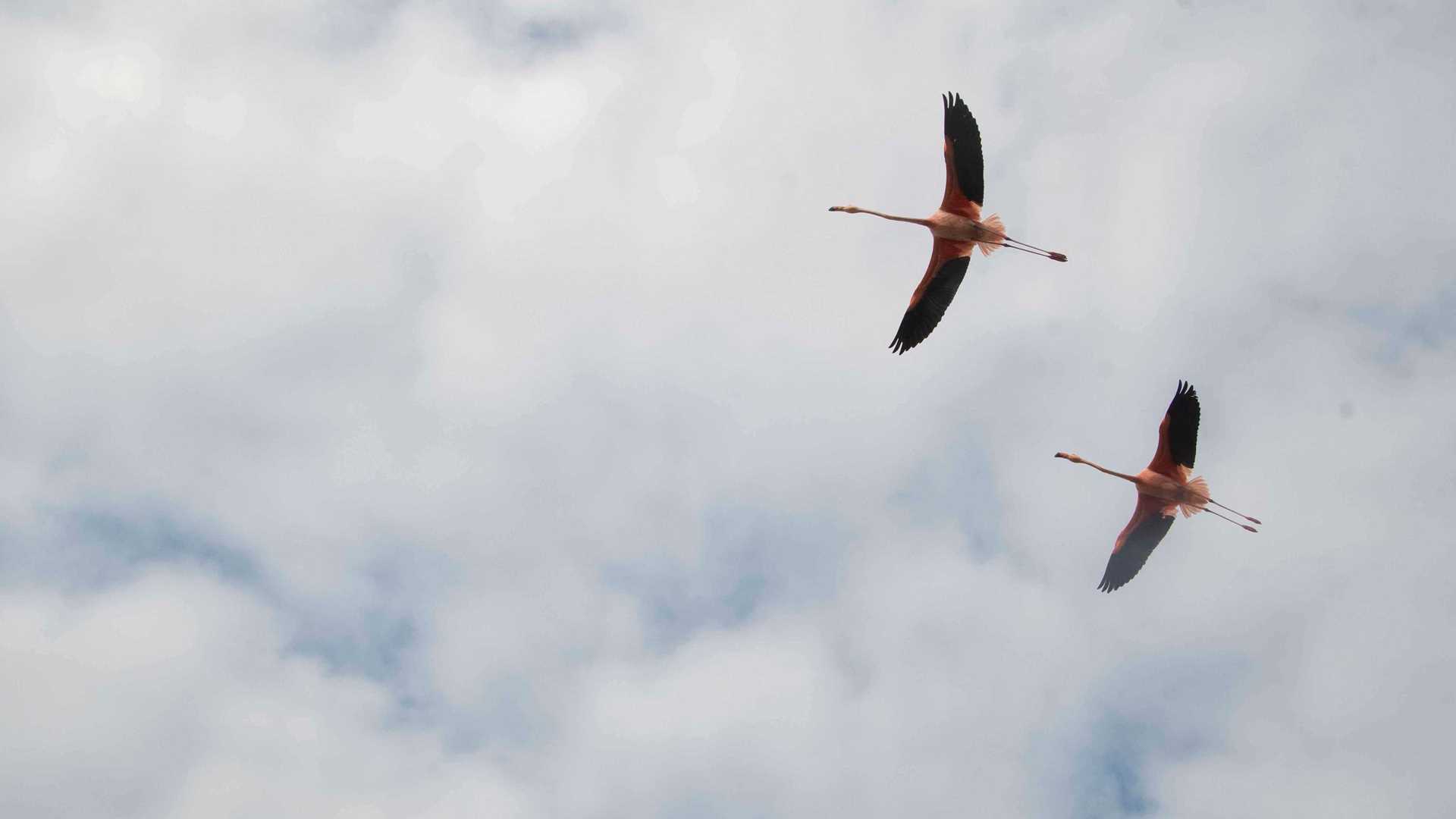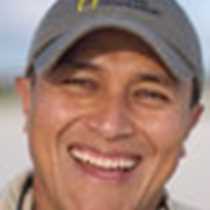Guests onboard National Geographic Endeavour II spent the day exploring Floreana Island. We kicked off our adventures with an early morning walk at Punta Cormorant. We landed on a glistening green beach; its color is due to olivine deposits in the sediment. Guests were greeted by approximately 35 greater flamingos. This is a significant proportion of the total population of approximately 400 flamingos across the archipelago. These birds arrived from the Caribbean to the Galapagos Islands, where they have undergone genetic divergence of mitochondrial DNA from the original colonizers. There is some contention amongst the academic community as to whether or not the flamingos are indeed an endemic subspecies. These birds mate and nest during the wet months; we were lucky enough to observe their nests – volcanic shaped mud structures – along the periphery of the lagoon, some of which were harboring flamingo chicks. We crossed over to a white sand beach on the other side where we were delighted to find Pacific green sea turtles on the shoreline, just recently having laid eggs along the dunes. We also observed sea turtles copulating in the surf zone. The islands provide habitat for at least 4,000 to 5,000 breeding females, making the Galapagos Archipelago the most important place in the Eastern Tropical Pacific Seascape for the Pacific green sea turtle. Guests also observed and photographed two blue-footed booby adults alongside their juvenile hatchling. We discussed the evolutionary adaptations of their blue feet as it relates to sexual selection and egg incubation.
After our hike at Punta Cormorant, guests enjoyed a Zodiac ride along the coast of Champion Islet. We discussed the conservation efforts taking place to eradicate invasive mammals on Floreana Island so that park authorities can reintroduce a mockingbird species that closely resembles the original Floreana mockingbird that went extinct decades ago. Guests observed juvenile Galapagos sea lions and many species of sea birds, including: the swallow-tailed gull, tropic birds, brown noddies, and Nazca boobies. After the Zodiac cruise, we disembarked to snorkel in the same area. During our snorkel outing, guests observed many species of tropical fishes, many of which we found in large schools. We also swam with Galapagos sea lions and caught a glimpse of two whitetip reef sharks.
After lunch, guests disembarked for ocean activities like paddleboarding and kayaking in a beautiful lagoon. We observed rays, juvenile sea lions, and sea turtles in the lagoon. In the afternoon, guests disembarked for Post Office Bay, where they learned about the human history of this famous site and carried out the age-old tradition of mailing postcards to their loved ones back home so that they may be hand delivered. Some guests received post cards found in the barrel addressed to areas close to their hometowns so that they may hand deliver the postcards themselves.










